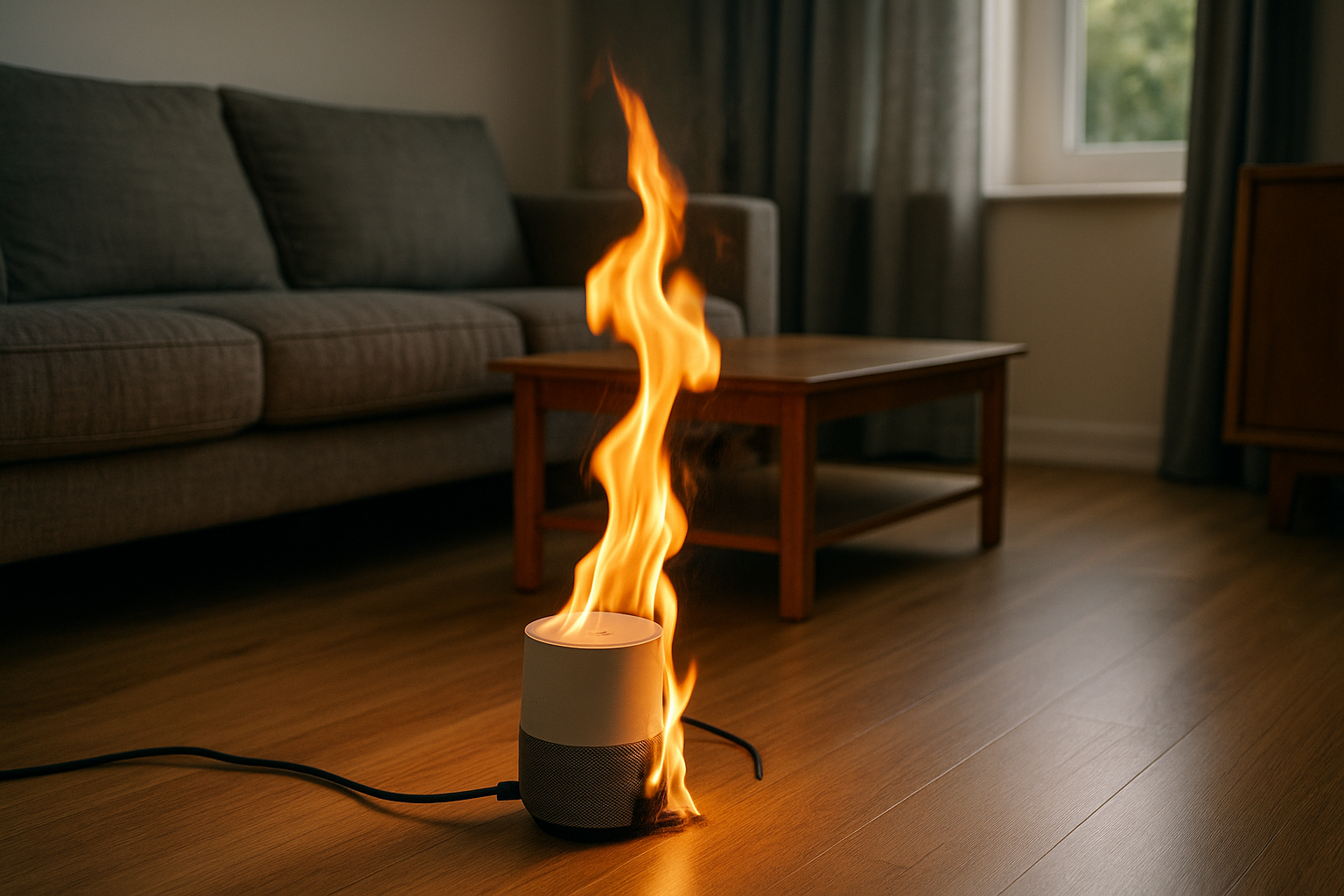Emerging Litigation Over Smart Home Device Fires Highlights Product Design Risks
As smart home devices become fixtures in American households, new legal questions are emerging about their safety. Recent fire incidents linked to faulty charging systems, overheating batteries, and software malfunctions have led to a wave of product liability claims. These lawsuits are forcing manufacturers to confront the hidden risks of connected technology.
Smart home devices promise convenience and control. They manage thermostats, lighting, appliances, and even security systems with a few voice commands. But behind the innovation is complex hardware that runs continuously, often drawing power 24 hours a day. When these systems fail, the results can be catastrophic. Fire departments across the country have reported an increase in home fires caused by malfunctioning devices, from smart plugs to robotic vacuums.
What makes these cases different from traditional product defects is the combination of software and hardware failure. A battery might overheat because of a design flaw, but a software glitch can prevent the device from shutting down safely. That overlap complicates liability. Manufacturers often point fingers at third-party component suppliers or software developers, while victims argue that the entire product was sold as a single, integrated system.
In product liability law, the concept of “stream of commerce” plays a central role. It means that every company involved in designing, manufacturing, or distributing a product can be held responsible for defects. For smart devices, that stream often includes multiple contributors — hardware makers, firmware developers, and cloud service providers. Plaintiffs are now arguing that each should share liability when a failure causes injury or property damage.
The lawsuits also highlight another issue: data collection. Many smart devices record temperature levels, power usage, and error logs. These records can reveal whether a manufacturer knew about overheating problems before a fire occurred. In some cases, internal testing data shows that companies detected the same issues long before the products reached consumers. Such evidence can turn an ordinary negligence case into one involving gross misconduct.
Insurance companies are also paying attention. As more claims arise from smart home fires, insurers are reassessing coverage for homeowners and manufacturers alike. Some policies now exclude damage caused by “connected electronic devices,” shifting risk back to consumers. This has sparked debate about whether insurance laws need to evolve to keep pace with technology.
For consumers, prevention remains key. Avoid plugging multiple smart devices into the same outlet, and monitor products that stay powered on overnight. Manufacturers recommend using only approved charging cables and keeping firmware updated to prevent overheating. Simple maintenance steps can prevent disasters before they start.
For attorneys, these lawsuits represent a new frontier in product liability. They require understanding both engineering and data forensics. Expert witnesses must explain how heat transfer, electrical resistance, and programming logic interact to create failure. Courts are adapting quickly, but many judges acknowledge that existing product liability rules were not built for devices that rely on both physical and digital systems.
The broader legal impact could be significant. If plaintiffs succeed in proving systemic negligence, manufacturers may face new safety regulations requiring built-in temperature sensors, fire suppression systems, or mandatory software updates. This could reshape how future smart devices are designed, tested, and sold.
In the rush to make homes smarter, some companies may have overlooked the basics of safety. These lawsuits are not just about fires; they are about trust. When technology enters the home, it carries an unspoken promise that it will protect, not endanger. Courts are now determining what happens when that promise is broken.


